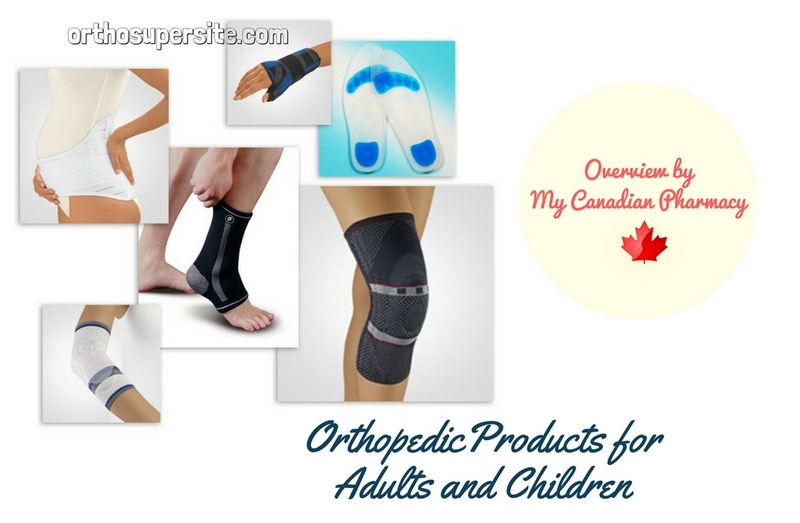Orthopedic products are designed to treat and prevent diseases of the joints and spine. There is a wide variety of orthopedic products, some of which are designed to protect against various injuries, while others provide support for the spine.
Appliance of orthopedic products
 Orthopedic products are products designed to treat or prevent diseases of the joints and spine. There are many similar goods and they perform different functions. Some of them are designed to protect joints from various injuries, others to maintain the spine, some more to reduce the load on the ligament apparatus of the limbs.
Orthopedic products are products designed to treat or prevent diseases of the joints and spine. There are many similar goods and they perform different functions. Some of them are designed to protect joints from various injuries, others to maintain the spine, some more to reduce the load on the ligament apparatus of the limbs.
You do not need to have a medical education to understand the importance of joints in a person’s life. Unfortunately, the ligamentous apparatus diseases that are the most common reason for contacting a doctor.
One of the immutable medical truths is that any disease is much easier to cure at the beginning of its development. If we talk about orthopedics, this statement can be visually illustrated: depending on the stage of the disease and the degree of deformation of the joints of the limbs / spine, the methods of therapy vary considerably – in the early stages, physical therapy and correction methods can be of successful, but in the late stages – only surgery can help. Therefore, the faster you started the therapy, the more chances you have to protect your body from surgical intervention.
Orthopedic products in pediatric practice
Some diseases of the musculoskeletal system develop in childhood, in this regard, parents should be particularly careful: follow the posture, the gait of the child, regularly take an interest in his state of health. Moreover, children’s ligaments and bones are more flexible and elastic than adults’, therefore, they are more easily corrected. Of course, it’s much easier to cure diseases of the musculoskeletal system in a child than in an adult.
Treatment with orthopedic products begins from childhood. Most often, children develop flat-feet and deformities of the spine (for example, scoliosis or kyphosis). If these diseases are detected early enough, then patients are prescribed special orthopedic products, therapeutic exercises, massage and manual therapy (sparing methods of treatment).
To treat flat-feet, doctors advise wearing insoles and special orthopedic footwear. Insoles are selected by the doctor taking into account the individual characteristics of the child’s foot. Shoes should be made of natural materials, have a hard back and, ideally fit in size. The use of these orthopedic products is a guarantee of a positive effect.
Massage pads are also used to prevent and treat flat-feet and they:
- Contribute to the formation of the arches of the foot, stimulating its receptors;
- Carry out a point massage of its reflex zones;
- Strengthen muscles and ligaments of the ankle.
Deformities of the spine – violations of posture – are also treated with correctors of posture (or recliners). They restore muscle tone, relieve the load on the thoracic parts of the spine, dilate the shoulders and fix them in the correct position.
Orthopedic mattresses and pillows can also prevent the development of deformities of the spine. The mattress will provide the most correct physiological position of the spine and relieve tension in the muscles. Mattresses differ in size and can be for babies, children under three, children from three to eight years old, from eight to sixteen. They have different degrees of rigidity, are made of strong and resilient material that passes air well, does not deform, helps the body to take an ideal position for rest.
Orthopedic anatomical pillows are required to prevent curvature of the cervical spine (and for rehabilitation after injuries to the cervical vertebrae).
If children are actively involved in sports or have sustained injuries, experts advises trying orthopedic restraints for joints (bandages), which differ from adults’ in size and rigidity of fixation. Issued by:
- Fixators for the lower extremities (for the hip joint and knee, hip and lower leg, and also the foot – the so-called “Swedish orthoses”);
- Fixators for upper limbs (for individual fingers, wrist, elbow joint and shoulder);
- Head holders (Schantz’s tires) and rigid / semi-rigid cervical orthoses.
There are also hernial bandages, which are used for weak abdominal muscles in children (they are used as a remedy if surgery is contraindicated).
Store of orthopedic goods for children also sell balls for gymnastics which help learn to keep the balance, try and assimilate new movements, train the vestibular apparatus, muscles and ligaments, and develop flexibility.
In conclusion, we can say that now there is a fairly large selection of models of orthopedic products designed for children of different ages, so you can choose exactly the option that will help prevent the development of diseases of the musculoskeletal system and effectively correct existing deformities. And, what is very important, the achievement of therapeutic effect from orthopedic products does not require much effort: the child just needs to wear a corrector or special shoes, sleep on a properly matched bed to move step by step to recovery.
